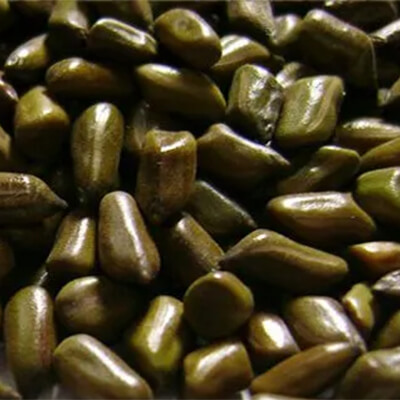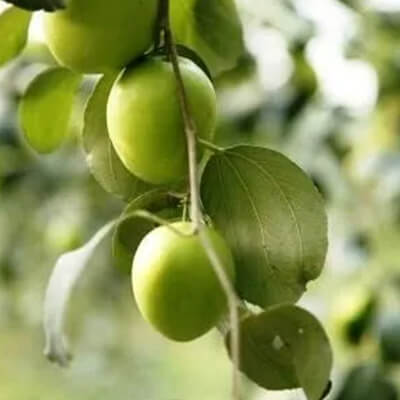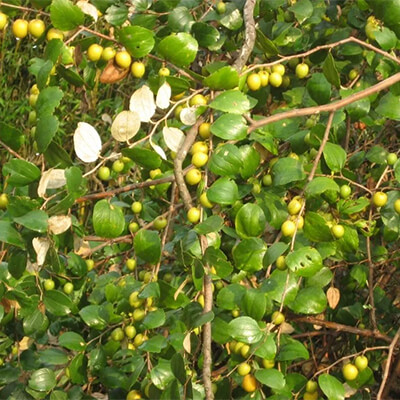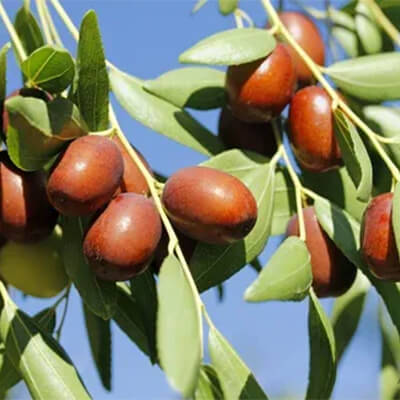On This Page
Chakramarda – The Sickle Wild Sensitive Plant (Ringworm Plant)
Introduction
Chakramarda is annual under a shrub that is well distributed in tropical countries and India. Prevalence of skin disorders is increasing worldwide and in India approx. 10- 12% of the total population is suffering from various skin disorders. Chakramarda leaves, roots, and seeds are widely used for various skin disorders since ancient times. Due to the importance of Chakramard in various skin disorders, it is commonly known as the Ringworm plant. As a food source, Chakramarda is considered a poor man’s food. As per recent research, it possesses anti-fungal, anti-helminthic, anti- psoriatic, anti-inflammatory activities, etc that are required parameters in various skin disorders.
Basonym of Chakramarda
चक्रं दद्रुं मृद्नातीति, चक्रं त्वग् रोग समूहं मृदनाति वा।
Chakramarda (Cassia tora Linn.) is a very efficacious drug in ringworm infestation and skin diseases.
Main Synonyms of Chakramarda
- According to habit
चक्री – चक्रेसमुहे जायमान: |
Chakramarda grows gregariously.
- According to morphology
मेष लोचने – मेषस्य नेत्रमिव पत्रमस्य।
The leaves of Chakramarda are resembling with eyes of sheep.
दृढ़ बीज – दृढानी बीजान्यस्य।
Seeds of Chakramarda are hard.
- According to properties and action.
दद्रुघ्न – दद्रुं हंतिति।
Chakramarda cures Dadru.
पामाघाति – पामां हंतिति।
Chakramarda is useful in Pama Kustha.
Some other synonyms of Chakramarda are:
- Mesha Kusuma
- Edagaja
- Prapunnada
- Padmaja
- Vimardaka
- Sokanaasana
- Mardakara
- Kharjughana
- Chakrika
Regional Names of Chakramarda
- Ringworm plant (English)
- Chakwad, Parwad (Hindi)
- Nakla (Marathi)
- Kubariya (Gujarati)
- Tagari (Tamil)
- Tangarise (Telugu)
- Chakunde (Bengali)
- Ain- es- Suratin (Arabic)
- Sanjisuboya (Persian)
Botanical Name
Cassia tora Linn.
Cassia is Cognate of Kasian in Bible
Tora is the Srilankan name of the plant.
Family
Caesealpinaceae (Putikaranjadi Kula), Fabaceae
Ayurveda Reference for Chakramarda (Cassia tora)
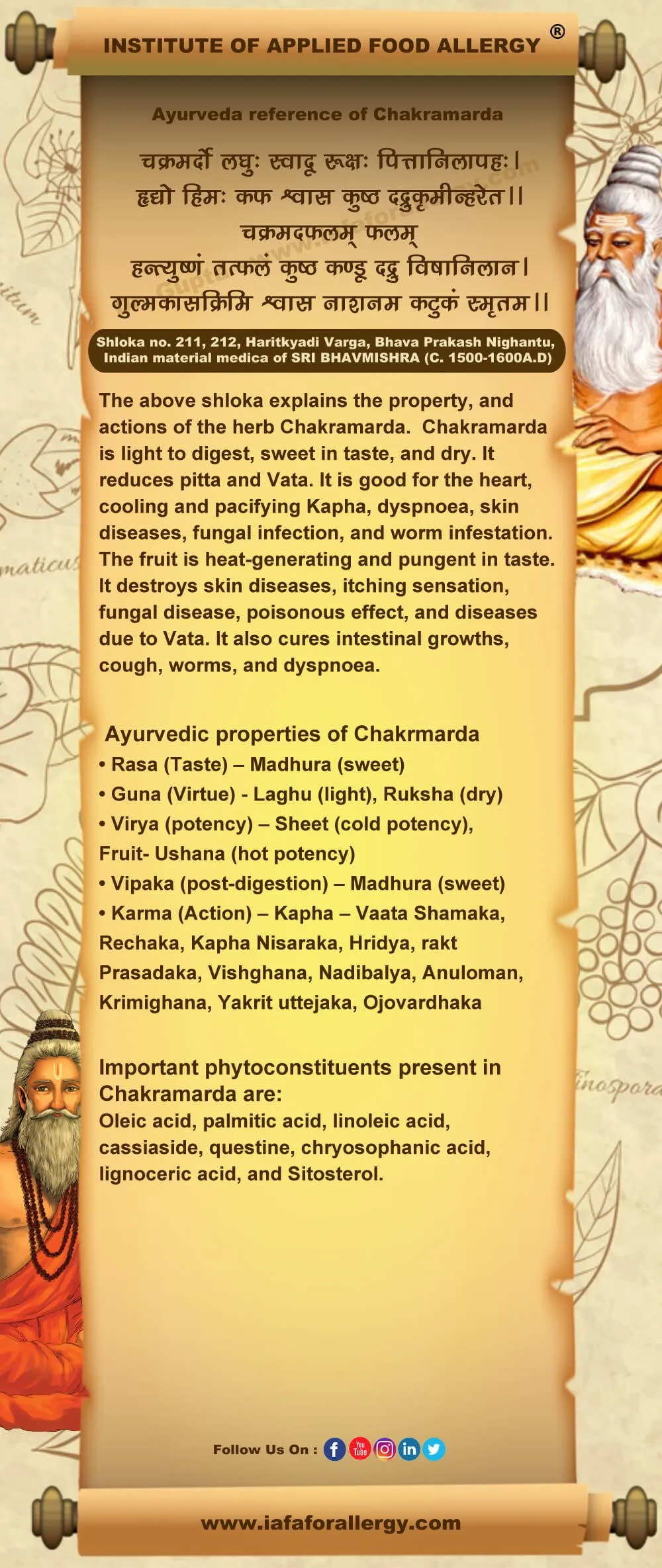
Scientific Classification of Chakramarda
| Kingdom | Plantae |
| Class | Dicotyledons |
| Subclass | Polypetalous |
| Series | Thalamiflorae |
| Order | Parietals |
| Family | Caesalpiniaceae (Fabaceae) |
| Genus | Cassia |
| Species | tora |
Classification of Chakramarda as per Charaka and Sushruta
- Charaka: Shaka Varga
- Sushruta: Urdhavbhaghara
Chakramarda’s Description in Brihatrayi
As Edagaja
| Charaka | Shusruta | Vagbhata (Ashtang Hridya) |
| C. S. Su. 3/ 2, 12, 14 | — | A. H. Su. 6/ 94 |
| C. S. Su. 27/ 32 | — | A. H. U. 24/ 27 |
| C. S. Chi. 7/ 92, 102, 112, 125, 126, 159, 160 |
As Chakramarda
Susruta Samhita Chikitsa Sthana. 9/ 12, 13
As Parpunnada
| Charaka | Shusruta | Vagbhata (Ashtang Hridya) |
| C. S. Su. 3/ 12 | S. S. Su. 39/ 2 | A. H. Chi. 19/ 70, 79, 85 |
| C. S. Su. 27/ 99 | S. S. Su. 46/ 262, 271 | A. H. U. 22/ 87 |
| C. S. Chi. 7/ 93 | S. S. Chi. 1/ 97 | A. H. U. 24/ 10 |
| S. S. Chi. 9/ 10, 19 | ||
| S. S. Chi. 10/ 4 |
External Morphology of Chakramarda
- Habit: An annual field shrubby weed, 30-90 cm. high, as a rainy season weed with a fetid smell.
- Leaves: Leaves of Chakramarda are 7.5-10 cm, long, rachis grooved, pubescent, with a conical gland between each of the 2 lowest pairs of leaflets, stipules 1.3-2cm. long, linear-subulate, caducous.
- Leaflets: Leaflets of Chakramarda are 2 pairs, opposite, 2.5-4.5 by 1.3-2.5 cm. The lowest pair of the leaflets of Chakramarda is the smallest. Leaflets of Chakramarda are obovate-oblong, glaucous, membranous, glabrous in touch, or more or less pubescent. The base of Chakramarda is somewhat oblique, usually rounded, the main nerves of leaflets are 8-10 pairs in number, petiolules 2.5 mm. long, pubescent.
- Flowers: Flowers of Chakramarda are yellow, usually in subsessile pairs in the axils of the leaves, the upper crowded, common peduncle in fruit not exceeding 4 mm. long pedicels in Fruit rarely exceeding 8mm. long. Calyx of Chakramarda is glabrous, divided to the base, segments of approximately 5mm. long, ovate, acute, spreading. Petals 5, pale yellow, subequal, 8 by 2.5 cm., oblong, obtuse, spreading the upper petal (standard), 2-lobed, the others entire.
- Stamens: Stamen is 10, the 3 uppers reduced to minute staminodes, the remaining 7 perfect, subequal.
- Pods: Pods of Chakramarda are 12.5-20 cm. by 4-5 mm., sub-heterogeneous, much curved when young, obliquely septate, puberulous, not reticulate the sutures very broad.
- Seeds: Seeds of Chakramarda are 25-30, rhombohedral, with the long axis in the direction of the pod.
Flowering and fruiting time
May to November or Summer and autumn, the cold season.
Collection of Pods
The pod of Chakramarda is collected from August to October month, when the seeds are about to ripen and sundried. After removal of the pericarp layer of fruit, seeds are used.
Varieties of Chakramarda
Two species of Cassia are accepted as the source of Chakramarda:
- Cassia obtusifolia Linn.
- Cassia tora Linn.
Distribution of Chakramarda
Chakramarda is found throughout the country. It is a common rain weed, especially in waste places, roadsides, farming fields, forest edges, etc. it is generally found in warmer parts of different regions of India.
The Useful Part of Chakramarda
The useful part of Chakramard is Bija (seeds), Patra (leaves), Mool (roots)
Important Phytoconstituent of Chakramarda
Plant of Chakramarda contains emodin, glucoside, and pleasant-smelling fixed oil 50%.
- Seeds: Seeds of Chakramarda yield oleic acid, palmitic acid, linoleic acid, chrysophanic acid, lignoceric acid, and Sitosterol.
- Leaves: Leaves contain purgative substances like cathartine, red coloring matter, and some mineral substances.
Recent Research on Chakramarda
- Antifungal
- Anti- helminthic
- Anti-bacterial
- Anti- psoriatic
- Anti- shigellosis
- Anti – itching
- Anti-inflammatory
- Antioxidant
- Nitric oxide scavenging activity
- Anti-tumor
- Antimicrobial
- Laxative
- Hepatoprotective activity
Rasa-Panchaka (Properties) of Chakramarda according to Dhanvantari Nighantu
| Rasa (Taste) | Katu (pungent) |
| Guna (Virtue) | Laghu (light), Ruksha (dry) |
| Virya (potency) | Ushana (hot potency) |
| Vipaka (post-digestion) | Katu (pungent) |
Rasa-Panchaka (Properties) of Chakramarda Leaves (Patra), Seeds (Bija) according to Bhava Prakasha Nighantu
| Rasa (Taste) | Madhura (sweet) |
| Guna (Virtue) | Laghu (light), Ruksha (dry) |
| Virya (potency) | Sheet (cold potency) |
| Vipaka (post-digestion) | Madhura (sweet) |
Dosha Karma
Kapha – Vaata Shamaka, Rechaka, Kapha Nisaraka, Hridya, rakt Prasadaka, Vishghana, Nadibalya, Anuloman, Krimighana, Yakrit uttejaka, Ojovardhaka
Prayogarha Vyadhi (Therapeutic Indications) of Chakramarda
- Kustha
- Kandu
- Charma Roga
- Arsha
- Gulma
- Krimi Roga
- Oupsargika roga (Pratisedha)
- Gandamala
- Shiro Roga
- Dadru
- Pama
- Vrana
- Kitibh
Aamyik Prayog (Therapeutic Uses) of Chakramarda
- Kustha (Skin disorders):
- Chakramarda, Vidanga, Haridra, Daruharidra, Aaragvadha (root), and Kustha, this combination is excellent for eradicating Kustha. (Charaka Samhita Chikitsa Sthana. 7/ 161)
- External application of Chakramarda, Sarjarasa, etc. mixed with sour gurl is a remedy for Sidhma type of Kustha. (Charaka Samhita Chikitsa Sthana. 7/ 127)
- Seeds of Chakramarda, impregnated with Snuhi latex, urine, and yeast dried in the sun make a good paste for Kitibha. (Vrinda Madhava. 51.35)
- Chakramarda seeds with an equal quantity of Jiraka and a bit of Sudarsana root destroy ringworm and Kustha. (Vanga Sena. Kustha. 67)
- Gandamala (Scrofula): Chakramarda Tailam. (Bhava Prakasha Chikitsa Sthana. 44. 45. 46)
- Vatavyadhi: Vegetable or other dietary preparations of Chakramarda leaves alleviates Vatavyadhi. (Siddhabheshaj Mani Mala. 4/ 461)
- Shiro Roga (Head diseases): Juice of Shalaparni or Chakramarda pounded with sour should be used as a paste. (Ashtanga Hridya Uttara Tantra. 24/ 10)
- Sukh Prasava (For easy delivery): The root of Chakramarda is pounded finely and put into the vagina. It helps easy delivery. (Vrinda .13. 30)
Important Benefits of Chakramarda
- Laxative (Rechaka): Chakramarda seeds contain anthrax- glucoside that gives the laxative effect.
- Weight loss (Stholya): Chakramarda seeds maintain a healthy digestive system by removing unwanted toxins from the body. Thus, helps to lose weight.
- Hypertension (Uccha Rakta Chapa): Chakramarda with its hypotensive properties helps to bring down the high blood pressure.
- Bee sting: The leaves of Chakramarda are pounded and are applied topically in case of the bee sting.
- Intestinal parasite (Krimi Roga): The decoction of Chakramarda is given in the case of intestinal parasites.
Matra (Therapeutic Administration and Dosage) of Chakramarda
- Beeja Churna (Seed powder): 1- 3 grams
- Patra Swarasa (Leaf juice): 5 – 10 ml

Have A Health Issue?
Consult Online
- Dr. Sahil Gupta (B.A.M.S., M.H.A.)
Ayurvedic Allergy Specialist
CEO & Founder of IAFA®
Classical Reference of Chakramarda (Cassia tora)
Bhava Parkasha Nighantu, Haritkyadi varga, 211
चक्रमर्दो लघु: स्वादू रूक्ष: पित्तानिलापह: ।
हृद्यो हिम: कफ श्वास कुष्ठ दद्रुकृमीन्हरेत॥
Bhava Parkasha Nighantu, Haritkyadi varga, 212
चक्रमदफलम् फलम्
हन्त्युष्णं तत्फलं कुष्ठ कण्डू दद्रु विषानिलान।
गुल्मकासक्रिमि श्वास नाशनम कटुकं स्मृतम।।
Kaiyadeva Nighantu, Aushadhi Varga, 699- 701
चक्रमर्द:
दद्रुघ्नः स्यादेडगज: क्षोडको मर्दकस्तथा।
आवर्तकस्त्वेडगज: चक्रमर्दश्च च चक्रिका।।
पमाड़ो (पद्माट:) मेषकुसुम: प्रपुन्नाटप्रपुन्नाड:।
चक्रमर्दप्रपुन्नाटगुणा:
प्रपुन्नाटो हिमो रूक्षो हद्य: स्वादु: पटु लघु।।
विष्टम्भी सुष्टविण्मूत्र: कुर्यात् पित्तानिलौ हरेत्।
कफ कुष्ठ ज्वर श्वास कासमेहारुचिकृमीन्।।
Kaiyadeva Nighantu, Aushadhi Varga, 702, 703
चक्रमर्द शाकं
प्रपुन्नाटस्य शाकं तु कफ कुष्ठ अनिलापहम्।
पित्तप्रकोपणं बल्यं दद्रु पामाहरं गुरु:।।
चक्रमर्दफलम्
तत्फलं कटुकं सोष्णं जयेत् कुष्कफानिलान्।
विषकण्डूगुल्म दद्रु श्वास कासकृमीन् जयेत्।।
Raja Nighnatu, Shatahvadi Varga, 198- 200
चक़मर्द:
स्याच्चक्रमदो एण्डगजो गजाख्यो मेषाह्वयश्चै एडगजो: हस्ती।
व्यावर्तकश्चक्रगजस्य चक्री पुन्नाड पुन्नाट विमर्दकाच्च।।
दद्रुघ्न तर्वत्स्य स्याच्च क्राह्व: शक नाशनः।
दृढ़ बीज: प्रपन्नाट: खर्जुघ्न चोन विंशति: ।।
चक्रमर्दगुणा:
चक्रमर्द: कटुस्तीव्रो मेदोवातकफापह: ।
व्रणकण्डूतिकुष्ठार्तति दद्रु पामादिदोषनुत्त्।।
Bhava Parkasha Nighantu, Shaka Varga , 36
दद्रुघ्न पत्र -चक्रमर्दपत्रशाकम्
दद्रुघ्नं पत्रं दोषघ्नंम्लं वातकफापहम्।
कण्डूकासक्रिमि श्वास दद्रु कुष्ठ प्रणुल्लघु ॥
Dhanwantri Nighantu
चक्रमर्दः
चक्रमर्द: कटूष्णः स्यात्परोक्तो वातकफापह: ।
दद्रु कण्डुहरः कान्ति सौकुमार्यकरो मत:।
चक्रमर्दबीजम्
तत्बीजं दद्रुजित् सिध्मत्वग्दोषसर्व कुष्ठजित् ।
वातरक्तापहं तस्य शाकं कफहरं लघु।।
Ksemakutuhalam
प्रपुन्नाटो लघु: स्वादु: वात शलेष्महर: परः।
तिक्त: कण्ड्वामयहर: कासकुषकृमी् जयेत।।
Vanga Sena
दद्रु
चक्रमर्दस्य बीज मूलकाम्बुप्रपेषितम्।
दद्रुघ्नं लेपनं कुर्यात्……।
गण्डमालायाम
चक्रमर्दकमूलस्य कल्के कृत्वा विपाचयेत्।
केशराजरसे तैलं कटुके मृदुना अग्निना।।
पकत्वा शेषे विनिक्षिप्य सिंदूरभवा तारयेत।
एतत्तैलं निहन्त्याशु गण्डमालां सुदारुणाम्।।
Vaidya Manorma, Patala, 13- 30
सुख प्रसवार्थम
प्रपुन्नाटशिफागाढं क्षुष्णा योनौ धृता भवेत्।।
…… सुखसूतिदा।।
Shodhla, Shiroroga Aadhikara
सूर्यावर्त्ताध्वविभेदयो: नस्ययोग:
चक्रमर्दबीजैर्वा लेप: काजिकपेषितै: ।
Chakradutta, 50- 32
किटिभ कुष्ठ
चक्राह्वयम स्नुही क्षीरं भावितं मूत्र संयुतम।
रवितप्तं हि किंचित्तु लेपनात् किटिभापहम्॥
Chakradutta, Kustha Chikitsa, 50- 23
कुष्ठचिकित्सायां चक्रमर्दबीजादिप्रलेप:
चक्रमर्दस्य बीजानि जीरकश्च समांशिकम् ।
स्तोकं सुदर्शनामूलं दद्रु कुष्ठ विनाशनम्।।
Charaka Samhita, Chikitsa Sthana, 7 / 124
सिध्म कुष्ठ
एडगज: सर्जरसो…… सिध्मकुष्ठानाम् ।
काञ्जिक युक्तं तु पृथंगमतमिदम उद्वर्तनं क्रमशो लेपा: ।
Ashtanga Hridya, Uttara Tantra, 24/ 10
शिरोरोगे
…..लेपे तु प्रपुन्नाटो अम्लकल्कित:।
Bhava Parkasha, madhyama Khanda, 44/ 45- 46
गण्डमालायां चक्रमर्दतैलम्
चक्रमर्दकमूलस्य मृदुना अग्रिना ।
पादांशिकं विनिक्षिप्य सिन्दूरत्ववतारयेत।
एततैलं निहन्याशु गण्डमालो सुदारुणम् ॥
Chakradutta, 50 – 22
कुष्ठ चिकित्सायां प्रपन्नाड बीज प्रयोग
Charaka Samhita, Chikitsa Sthana, 7 / 16
कुष्ठ
एडगजः सविडंग दे च निशे राजवृक्षश्च।
कुष्टोदालनमद्य सपिप्पलीपाकलं योजयं।।
Vanga Sena. Kustha. 67
चक्रमर्दस्य बीजानि जीरकं च समांशकम।
स्तोकं सुदर्शनामूलं दद्रु कुष्ठ विनाशनम॥
Vanga Sena. Kustha. 66
चक्रमर्द बीजन्तु मूलकांबू प्रपेषितं।
दद्रुघ्नं लेपनं कुर्यात् शिग्रु मूल त्वचो अथवा।।
Charaka Samhita, Chikitsa Sthana, 7/ 127
एड्गजः सर्जरसो सिध्म कुष्ठनाम।
काञ्जिक युतं तू पृथंगमतमिदम उद्वर्तनं लेपा:।।
Vrinda Madhava, 51- 35
चक्राङ्ग बीजं स्त्रूक क्षीर भावितम मूत्रसंयु्तम् ।
रवितप्तं सकिण्वं च लेपनं किटिभापहम्।।
Vanga Sena. Kustha. 66
चक्रमर्दस्य बीजन्तु मूलकाम्बुप्रपेषितम् ।
दद्रुघ्नं लेपनं कुर्याच्छिग्रुमूलत्वचा अथवा।।
Siddha Bhaishjya Manimala, 4/ 461
वातव्याधौ
प्रपुन्नाटक पत्राणां शाको च वाटिकापि वा।
वातव्याधिं शमयति विस्मय: किमत: परम्।।
Gadanigreha, 3- 1- 63
शिरोरोगे
स्थिरारसं वा लेपं तु प्रपुन्नाटो अम्लकल्कित: ।
Specific Formulation of Chakramarda
- Edagajadi Lepa – For Sidhm Kustha
- Dadrughani Vati – For Dadru Kustha
Some other formulations of Chakramarda are as follows:
- Talkeshwara Rasa
- Jyotishman Rasa
- Sinduradi Taila
- Nimba Churna
- Mahapinda Taila
- Vajraka Taila
Contraindication and Side Effects of Chakramarda
- Chakramarda is safe to take in a low dosage for a short period. Long-term use of Chakramarda should be avoided.
- Avoid the use of Chakramard during pregnancy and breastfeeding.
- It is a laxative so may cause loose motion.
Suggestive Readings Regarding Chakramarda
- http://dx.doi.org/10.13040/IJPSR.0975-8232.2(9).2286-91
- Meena, Ajay & Niranjan, Uttam & Yadav, A & Singh, Brijendra & Rao, A. (2010). Cassia tora Linn: A review on its ethnobotany, phytochemical and pharmacological profile. Journal of Pharmacy Research.
- Mazumder, A., Lahkar, V., Sahay, J., Oraon, A., Mazumder, R., & Pattnaik, A. K. (2005). PHARMACOGNOSTICAL STUDIES ON THE LEAVES OF Cassia tora Linn. (FAM. CAESALPINIACEAE). The ancient science of life, 25(2), 74–78.
- Acharya TK, ChatterjeeIB, Isolation of chrysophanic acid-9-an-throne, the major antifungal principle of Cassia tora, Lloydia, 38,1975, 218–220.
- Kumar, R. S., Narasingappa, R. B., Joshi, C. G., Girish, T. K., Prasada Rao, U. J., & Danagoudar, A. (2017). Evaluation of Cassia tora Linn. against Oxidative Stress-induced DNA and Cell Membrane Damage. Journal of pharmacy & allied sciences, 9(1), 33–43. https://doi.org/10.4103/0975-7406.206215
- Jain S, Patil UK. Phytochemical and pharmacological profile of Cassia tora Linn. – An overview. Indian J Nat Prod Resour. 2010;1:430–7.
- Awasthi VK, Mahdi F, Chander R, Khanna AK, Saxena JK, Singh R, et al. Hypolipidemic Activity of Cassia tora seeds in hyperlipidemic rats. Indian J Clin Biochem. 2015;30:78–83.
- Kim M, Lim SJ, Lee HJ, Nho CW. Cassia tora seed extract and its active compound aurantio-obtain inhibit allergic responses in IgE-mediated mast cells and anaphylactic models. J Agric Food Chem. 2015;63:9037–46.
References
- Agnivesha, Charaka, Dridhabala . In: Charaka Samhita, ed. Vaidya Jadavaji Trikamji Aacharya., editor. Varanasi: Chaukhamba Sanskrit Sansthan; 2009.
- Sushruta. In: Sushruta Samhita, Sutra Sthana, ed. Vaidya Jadavji Trikamji Acharya., editor. Varanasi: Choukhambha Orientalia; 2005.
- Vagbhata. In: Ashtanga Hrudaya, 9th ed. Anna Moreshwar Kunte, Krishnashastri Navarre, Harishastri, editors. Varanasi: Choukhambha Orientalia; 2005.
- Bhavamishra. In: Bhava Prakasha Nighantu, 11th ed. part 2. Brahma Shankara Mishra., Haritkyadi Varga, editor. Varanasi: Choukhambha Bharati Academy; 2009.
- Bhavprakasha, commentary by Bulusu Sitaram, forwarded by K.C.Chunekar
- Dhanvantari Nighantu, Diwedi BK. Editor. Guduchyadi varga, Chaukhamba Krishnadas Academy, Varanasi; 2008.
- Raja Nighantu, Shatahvadi Varga, editor, Varanasi.
- Sharma PV, Kaideva Nighantu. Aushadhi Varga. Chaukhamba Orientalia, Varanasi; 2006:
- Tripathi I., Raja Nighantu, ShatahavadiVarga, Chaukhamba Krishnadas Academy; Varanasi; 2010
- Dr. Gyanendra Pandey, Dravyaguna Vigyana, reprint 2012, Chowkhamba Krishnadas Academy
- K.niteshwar Dravyagunavigyana, reprint 2017.
- Dr. J.L.N. Sastry and Dr. B.S. Sastry, Dravyaguna Vigyana, Chaukhambha Orientalia, Varanasi.
- Chakrapanidatta, chakradatta with the vaidayaprabhahindi commentary by indradevatripathi, chaukambha sankritasansthan, varanai 2nd Edition, 1994.
Ayurveda is an Indian system of medicine that is popular since ancient times. Dr. Gupta’s IAFA® has been conducting research studies to find out different phytoconstituents of herbs and their action in the body. Such knowledge acquired by our experts is used in the preparation of medicines and providing the treatment facilities safely and effectively. IAFA® is the provider of safe and effective treatment for a wide range of diseases, mainly allergic diseases all based on Ayurveda.

